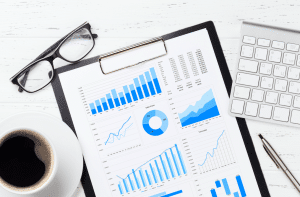Depending on how one views it, the stock price performance for the year has been a mixed bag, resulting in either an optimistic or pessimistic outlook. This year’s metric has recorded a Price increase of 20.01%. However, over the past six months, we’ve seen a weaker performance of 18.25%. The price of BKR leaped by -6.67% over the last 30 days. And in the last five days, it has surged by 2.17%.
Baker Hughes Co’s stock has had a calm market performance. The 1-year high for the company’s stock was $45.17 on 11/21/24, and the lowest price during the same period was recorded at $28.32 on 02/05/24.
52-week price history of BKR Stock
The history of a stock’s 52-week high and low prices can provide important information about its current state and future potential. Baker Hughes Co’s current trading price is -9.19% away from its 52-week high, while its distance from the 52-week low is 44.84%. The stock’s price range for this period has been between $28.32 and $45.17. The Energy sector company’s shares saw a trading volume of about 4.53 million for the day, which was lower than the average daily volume of 6.09 million over the last three months.
The Connection Between Financial Performance and Market Capitalization
Baker Hughes Co (BKR) has experienced a quarterly rise of 11.62% in its revenues when compared to the same period in the previous year. Presently, the company has a total market capitalization of 40.59B and boasts a workforce of 58000 employees.
How Moving Averages and Trading Volume Data Work Together
Based on Barchart.com data, the company’s moving average over the 100-day period was 38.35, with a change in price of +5.82. Similarly, Baker Hughes Co recorded 6,249,879 in trading volume during the last 100 days, posting a change of +16.53%.
BKR’s Debt-to-Equity Ratio: A Comprehensive Review
A key metric for assessing a company’s financial well-being and market status is the debt-to-equity (D/E) ratio. This ratio is derived by dividing a company’s total liabilities by its shareholders’ equity, and it demonstrates the level of debt a company uses to support its assets relative to shareholder equity. At the time of writing, the total D/E ratio for BKR stands at 0.37. Similarly, the long-term debt-to-equity ratio is also 0.37.
BKR Stock Stochastic Average
As of today, the raw stochastic average of Baker Hughes Co over the past 50 days is 55.14%. This is a increase compared to the raw stochastic average of the last 20 days, which was recorded at 34.62%. Additionally, the Stochastic %K and %D values for the company were 32.59% and 31.61%, respectively, over the past 20 days.






